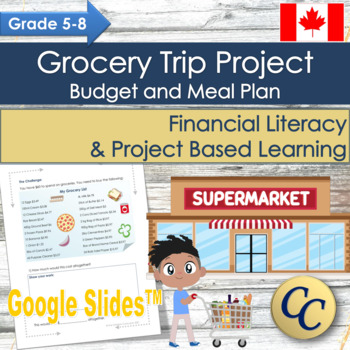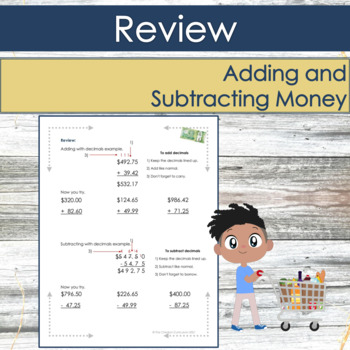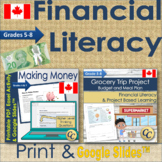Canadian Grocery Trip Project PBL & Financial Literacy for Online or Print
- Zip
- Google Apps™
- Easel Activity

Products in this Bundle (2)
Also included in
- Canadian money! Financial literacy and project based learning for grades 5 - 8. Includes 'Making Money', which looks at how young people can generate an income, and 'Grocery Trip Project', which gives middle school students the skills to budget and live within their means. Both resources include a PPrice $3.50Original Price $7.00Save $3.50
Description
Project based learning meets Canadian financial literacy! The Canadian Grocery Trip Project and meal planner covers both curriculum expectations, and life skills; project-based learning, AND financial literacy! Adding and subtracting decimals to the hundredths and healthy living expectations covered. No-prep, independent work activity that will give a great end result of a realistic grocery budget, as well as meal plan based on what is available. This project gives students the skills to get what they need within their budget as well as hunt for deals!
All this, in a format that you can use for assessment. Just click or print and assign!
⏰ 3-5 math classes for most students grades 5-8.
Have students use their own flyers or let them search online flyers to get the discounts they are looking for.
The PDF version includes:
- Easel Activity
- Memory verse cover page, (Matt 6:31,33).
- Review example and questions on adding and subtracting with decimals.
- The 'Grocery List Challenge & Rules'
- Graphic organizers to display their work and guide them to a solution.
- Meal planning challenge.
- Reflection questions, (can be added to a math journal).
- Complete example answers.
- Rubric
The Google Slides come in 2 parts; the teacher copy and student copy and allows for editable values, so you can modify for your learner or your region.
Teacher's copy of Google Slides includes: (30 Slides - all slides)
- Link to student's slides
- Instructions on how to make copies for your students
- Screen shots
- Answers
- Rubric
- Terms of use and credits
- Copy of all the student slides
Student's copy includes: (18 Slides - only what the each student needs)
- Interactive Table of Contents
- Review example and questions on adding and subtracting with decimals.
- The 'Grocery List Challenge & Rules'
- Graphic organizers to display their work and guide them to a solution.
- Meal planning challenge.
- Reflection questions, (can be added to a math journal).
- Rubric
→ For more Google resources for distance learning also check out the Adding and Subtracting Fractions and Design a Tree House. ←
☺☺☺ To be notified of all the latest from The Christian Curriculum, follow me. ☺☺☺






